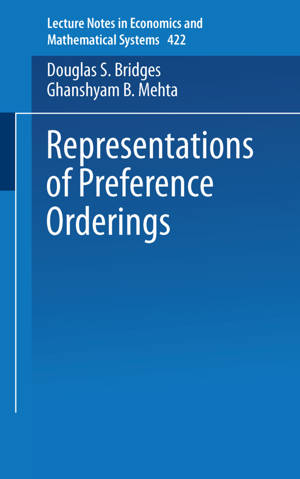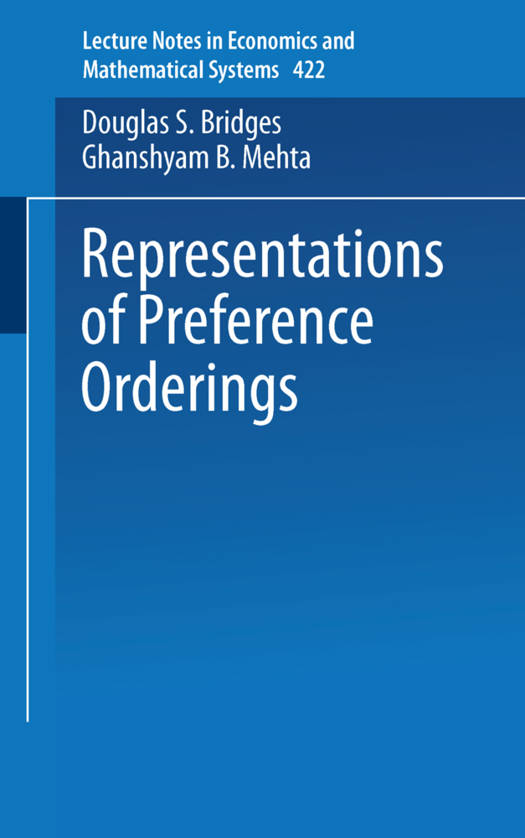
- Afhalen na 1 uur in een winkel met voorraad
- Gratis thuislevering in België vanaf € 30
- Ruim aanbod met 7 miljoen producten
- Afhalen na 1 uur in een winkel met voorraad
- Gratis thuislevering in België vanaf € 30
- Ruim aanbod met 7 miljoen producten
Zoeken
Omschrijving
A basic assumption made by pioneers of classical microeconomics such as Edgeworth and Pareto was that the ranking of a consumer's preferences could always be measured numerically, by associating to each possible con- sumption bundle a real number that measured its utility: the greater the utility, the more preferred was the bundle, and conversely. It took several decades before the naivety of this assumption was seriously challenged by economists, such as Wold, attempting to find conditions under which it could be justified mathematically. Wold's work was the first in a long chain of results of that type, leading to the definitive theorems of Debreu and oth- ers in the 1960s, and subsequently to the refinements and generalisations that have appeared in the last twenty-five years. Out of this historical background there has appeared a general mathe- matical problem which, as well as having applications in economics, psy- chology, and measurement theory, arises naturally in the study of sets bear- ing order relations: Given some kind of ordenng t on a set 5, fina a real-valued mapping u on 5 such that for any elements x, y of 5, x t yif and only if u(x) 2: u(y). If also 5 has a topology (respective/y, differential structure), find conditions that ensure the continuity (respectively, differentiability) of the mapping u. A mapping -u of this kind is called a representation of the ordering C::: .
Specificaties
Betrokkenen
- Auteur(s):
- Uitgeverij:
Inhoud
- Aantal bladzijden:
- 165
- Taal:
- Engels
- Reeks:
- Reeksnummer:
- nr. 422
Eigenschappen
- Productcode (EAN):
- 9783540588399
- Verschijningsdatum:
- 6/04/1995
- Uitvoering:
- Paperback
- Formaat:
- Trade paperback (VS)
- Afmetingen:
- 127 mm x 203 mm
- Gewicht:
- 181 g

Alleen bij Standaard Boekhandel
+ 210 punten op je klantenkaart van Standaard Boekhandel
Beoordelingen
We publiceren alleen reviews die voldoen aan de voorwaarden voor reviews. Bekijk onze voorwaarden voor reviews.











